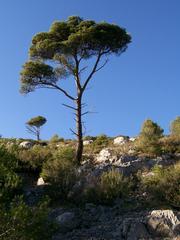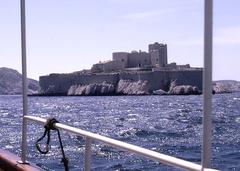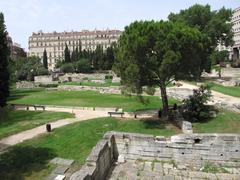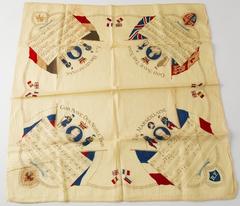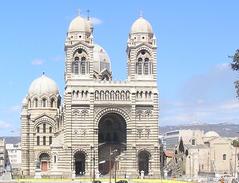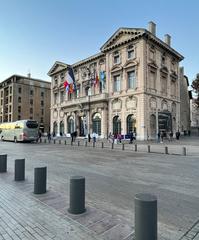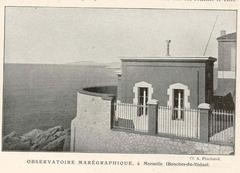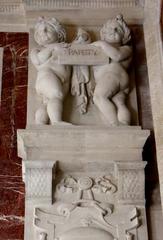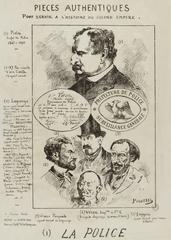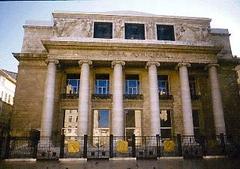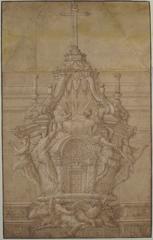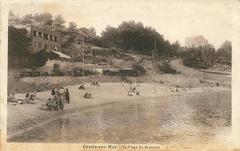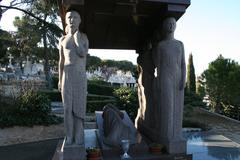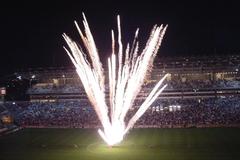
Visiting Place Castellane in Marseille: History, Tips, and Visitor Information
Date: 16/08/2024
Introduction
Place Castellane, located in the 6th arrondissement of Marseille, France, is a historic and bustling square that has played a pivotal role in shaping the city’s urban and cultural landscape. Established in the 18th century and named after Henri-César de Castellane-Majastre, the aristocrat who donated the land, the square has become a dynamic hub where history, architecture, and daily life converge. Today, Place Castellane serves as a gateway to some of Marseille’s most renowned attractions, including the Vieux-Port and Notre-Dame de la Garde, making it a must-see for visitors to the city (Marseille Tourisme, Wikipedia).
Table of Contents
- Origins and Early Development
- Henri-César de Castellane-Majastre’s Contribution
- The First Fountain and Obelisk
- Jules Cantini’s Fountain
- Technological Advancements
- Cultural and Social Significance
- Architectural Highlights
- Modern-Day Accessibility
- Visitor Information
- Nearby Attractions
- Events and Guided Tours
- Photographic Spots
- Local Etiquette
- FAQ
- Conclusion
- References
Origins and Early Development
Place Castellane’s beginnings trace back to the 18th century, a time of significant urban transformation in Marseille. The vision to align the city’s gates—Porte d’Aix and Porte de Rome—led to the extension of rue de Rome, culminating in the creation of the square. This urban expansion reflected the ambitions of King Louis XIV and set the stage for Place Castellane’s emergence as a prominent city landmark (Marseille Tourisme).
Henri-César de Castellane-Majastre’s Contribution
Henri-César de Castellane-Majastre was instrumental in the establishment of Place Castellane. In 1774, he donated his land to facilitate the creation of the square that would bear his name. This act of philanthropy not only shaped the urban fabric of Marseille but also established Castellane’s legacy as a central figure in the city’s development (Wikipedia).
The First Fountain and Obelisk
The square’s first major monument was a fountain with an obelisk, installed in 1798. Serving a dual purpose as a public lavoir, the fountain became an essential part of daily life for local residents. In 1811, the obelisk was replaced to honor the birth of Napoleon I’s son and was eventually relocated to Mazargues in 1911 (Marseille Tourisme).
Jules Cantini’s Fountain
The relocation of the obelisk made way for the iconic fountain donated by philanthropist Jules Cantini in 1911. Sculpted by André-Joseph Allar and completed in 1913, the fountain features allegorical figures representing the Durance, Gardon, and Rhône rivers. This Beaux-Arts masterpiece is now an emblem of Place Castellane and a celebrated architectural highlight (Wikipedia).
Technological Advancements
Place Castellane played a significant role in Marseille’s modernization. In 1882, the square became the site of an experimental installation of electric lighting, which soon extended to the famed La Canebière avenue. This technological leap marked a turning point in the city’s urban experience (Marseille Tourisme).
Cultural and Social Significance
Beyond its architectural and historical value, Place Castellane thrives as a social and cultural center. The square hosts the vibrant Castellane market, where visitors can browse local produce and antiques. Every Friday, a flower market enlivens Avenue du Prado, filling the air with color and fragrance (Marseille Tourisme).
Architectural Highlights
The Castellane district is renowned for its mix of old-world buildings and religious architecture. The area’s charming streets are lined with traditional restaurants, cafés, and boutiques, contributing to its unique ambience and offering plenty of opportunities for exploration (Marseille Tourisme).
Modern-Day Accessibility
Place Castellane is one of the city’s most accessible squares. It serves as a major transportation hub, with metro lines M1 and M2 intersecting at Castellane Station and tram line T3 terminating nearby. The square is also served by multiple bus lines, making it easy to reach from any part of Marseille (Moovit). The area is equipped with ramps and elevators, ensuring accessibility for visitors with limited mobility.
Visitor Information
- Visiting Hours: Open 24 hours a day, year-round.
- Admission: Free access; some nearby attractions may have their own fees.
- Best Time to Visit: Spring (April–June) and fall (September–November) offer mild weather. Early mornings or late afternoons are ideal to avoid the heat.
- Travel Tips: Wear comfortable shoes, bring water in summer, and carry a camera for memorable photos.
- Currency: Euro (€); carry some cash for small purchases.
- Language: French is the official language, but English is widely understood in tourist areas.
Nearby Attractions
- Vieux-Port: The historic Old Port, ideal for boat tours and waterfront dining.
- Notre-Dame de la Garde: Marseille’s iconic basilica, offering panoramic city views.
- La Canebière: A lively avenue known for its shops, cafés, and local life.
- Prado Market: A bustling market with local delicacies and artisan products.
- Parc du 26ème Centenaire: A green oasis perfect for relaxation and picnics (Traveloka).
Events and Guided Tours
Place Castellane is a venue for numerous events throughout the year, including the Fête de la Musique and Marseille Jazz des Cinq Continents festival. Guided tours can be arranged through local tourism offices or online platforms.
Photographic Spots
The Cantini fountain, surrounding architecture, and vibrant street scenes make Place Castellane a prime location for photography. The best light is in the early morning or late afternoon.
Local Etiquette
When visiting, greet locals with “Bonjour” or “Bonsoir.” Tipping is appreciated but not obligatory (5–10% is typical for good service). Dress modestly at religious sites and ask permission before photographing people.
FAQ
What are the visiting hours for Place Castellane?
Place Castellane is open 24/7.
Is there an entry fee?
No, access to Place Castellane is free.
How do I get there?
Take metro lines M1 or M2 to Castellane Station, or use tram T3 and several bus lines (Moovit).
Is it wheelchair accessible?
Yes, the square is spacious and metro stations are equipped with elevators and ramps.
Are there guided tours?
Yes, guided tours are available through local tourism resources.
Conclusion
Place Castellane is more than just a historical square; it is a living testament to Marseille’s enduring spirit and cultural vibrancy. From its 18th-century origins and architectural landmarks to its role as a modern transportation and social hub, the square encapsulates the city’s dynamic evolution. Whether you’re interested in history, architecture, or simply enjoying the vibrant local atmosphere, Place Castellane offers a unique and rewarding experience. For more travel tips and updates, consider downloading the Audiala app and exploring our related resources (Marseille Tourisme, Wikipedia).
References
- Marseille Tourisme
- Wikipedia
- Moovit
- Traveloka
- Marseille Tourisme - Castellane District
- Marseille Tourisme - Sites and Monuments


